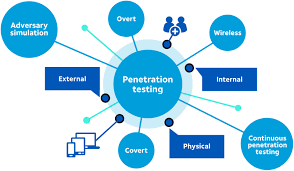Cybersecurity Services for Protecting Intellectual Property
In today’s knowledge-driven economy, intellectual property (IP) is one of the most valuable assets an organization can possess. From patents and trade secrets to proprietary software and creative works, IP drives innovation and provides a competitive edge. However, the growing sophistication of cyber threats has made protecting intellectual property more challenging than ever. This article explores the essential cybersecurity services and strategies that businesses can employ to safeguard their intellectual property.
The Importance of Intellectual Property Protection
1. Competitive Advantage
IP
differentiates businesses in the marketplace. Losing control over it can lead
to financial losses, loss of market share, and damage to reputation.
2. Regulatory and Legal Compliance
Industries
such as technology, healthcare, and manufacturing are often subject to strict
regulations concerning the protection of sensitive information, including IP.
3. Rising Cyber Threats
Cybercriminals,
state-sponsored actors, and insider threats frequently target IP to gain
competitive intelligence or disrupt operations.
Common Cyber Threats to Intellectual Property
1. Phishing and Social Engineering
Attacks
Attackers
use deceptive methods to gain access to sensitive information, including login
credentials that can unlock access to proprietary data.
2. Malware and Ransomware
Malware can
be deployed to steal, encrypt, or corrupt intellectual property, disrupting
business operations.
3. Insider Threats
Disgruntled
employees or contractors with access to sensitive IP may intentionally or inadvertently
expose it to unauthorized parties.
4. Advanced Persistent Threats (APTs)
State-sponsored
groups often employ APTs to infiltrate networks over long periods, extracting
valuable intellectual property without detection.
5. Cloud and Third-Party Risks
Organizations
increasingly store IP in the cloud or share it with third parties, which can
introduce additional vulnerabilities if proper security measures are not in
place.
Cybersecurity Services to Protect Intellectual Property
1. Threat Intelligence and Monitoring
Proactive
threat intelligence helps organizations identify and respond to potential risks
before they materialize. Continuous monitoring of networks and systems detects
unusual activity that may signal an attack on IP.
2. Vulnerability Assessments and
Penetration Testing
These
services identify and address weaknesses in your security infrastructure,
reducing the risk of unauthorized access to sensitive intellectual property.
3. Data Encryption
Encrypting
sensitive data ensures that even if it is intercepted, unauthorized parties
cannot access it. This applies to data in transit and at rest.
4. Endpoint Security
With
employees accessing sensitive IP from various devices, endpoint security
solutions ensure that every device connecting to the network is secure.
5. Cloud Security Solutions
Implementing
robust cloud security measures ensures that IP stored in cloud environments is
protected against unauthorized access, misconfigurations, and breaches.
6. Access Control and Identity
Management
Using
role-based access control (RBAC) and multi-factor authentication (MFA),
organizations can limit access to intellectual property to only those who need
it.
7. Incident Response and Recovery
Services
In the event
of a breach, a well-defined incident response plan minimizes damage and helps
organizations recover quickly, ensuring minimal disruption to operations.
Best Practices for Intellectual Property Protection
1. Implement Zero Trust Architecture
Adopting a Zero
Trust approach ensures that no user or device is trusted by default. Every
access request is verified before granting permissions.
2. Regularly Update and Patch Systems
Outdated
software and systems are common targets for cyberattacks. Ensure all systems
are updated with the latest security patches.
3. Conduct Regular Employee Training
Employees
are often the weakest link in cybersecurity. Regular training sessions educate
them on recognizing phishing attempts and other threats.
4. Secure Physical Access
Physical
security is often overlooked. Ensure that server rooms, filing cabinets, and
other areas containing sensitive IP are protected with physical access
controls.
5. Develop a Strong Data Governance
Policy
Clearly
define how IP is classified, accessed, and stored. A strong governance policy
minimizes the risk of accidental exposure or theft.
Emerging Technologies in IP Protection
1. Artificial Intelligence (AI) and
Machine Learning
AI-powered
tools analyze large volumes of data to detect anomalies and potential threats
to intellectual property in real-time.
2. Blockchain for Secure Transactions
Blockchain
technology ensures secure and tamper-proof records of IP transactions and
ownership.
3. Data Loss Prevention (DLP)
Solutions
DLP tools
monitor and control data transfers, preventing unauthorized sharing or copying
of sensitive IP.
Case Study: A Real-World Example
A global
manufacturing company faced repeated attempts to steal its trade secrets via
phishing and malware attacks. By implementing a combination of penetration
testing, endpoint security, and advanced threat intelligence services, the
company successfully identified vulnerabilities, blocked unauthorized access
attempts, and safeguarded its proprietary designs.
The Business Impact of Losing Intellectual Property
1. Financial Losses
Stolen IP
can lead to loss of revenue, legal fees, and increased competition.
2. Reputational Damage
Customers
and partners may lose trust in an organization that cannot protect its
sensitive information.
3. Operational Disruption
Cyberattacks
targeting IP often disrupt business operations, leading to lost productivity
and additional recovery costs.
Conclusion: A Proactive Approach to IP Security
Protecting
intellectual property requires a multi-faceted approach that combines advanced cybersecurity
services, employee education, and robust policies. Organizations that
invest in proactive measures not only safeguard their competitive advantage but
also ensure long-term resilience in an increasingly hostile digital landscape.

.jpeg)

.jpeg)
Comments
Post a Comment